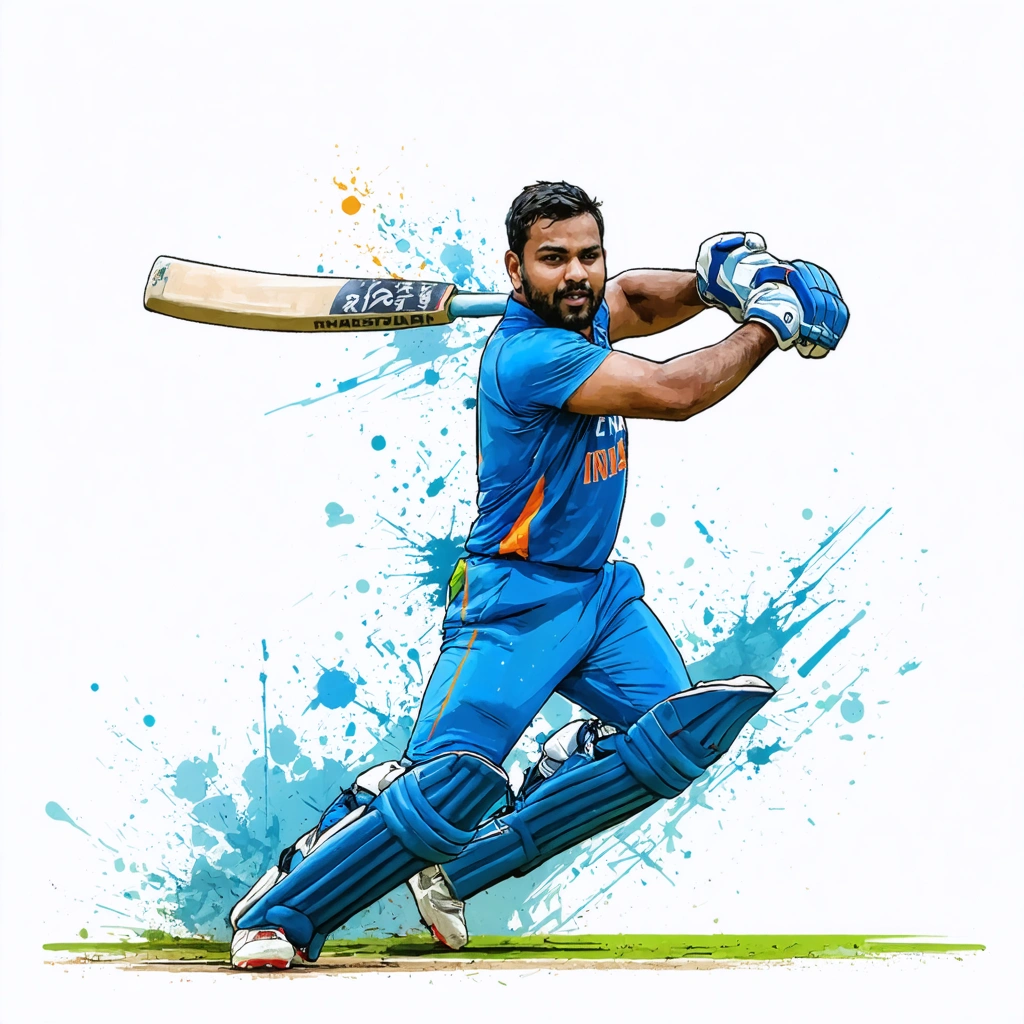
Cricket in 2025 is no longer just a game of bat and ball; it has evolved into a complex symphony of data, precision, and unparalleled technical prowess. For fans who have followed the sport through decades, the game’s heartbeat now pulses through intricate statistics and groundbreaking technologies that deepen our understanding and appreciation. But how exactly are these technical and statistical elements reshaping cricket today? And what can they reveal about some of the game’s most riveting rivalries and records?
The Challenge of Decoding Modern Cricket Complexity
If you’ve ever tried to follow a high-stakes match, say between the Indian Cricket Team vs Australia Cricket Team, you might have noticed that simply knowing who won or lost no longer tells the full story. The timelines of their encounters, for instance, are packed with moments where fractions of seconds, subtle changes in player form, and pitch conditions have made all the difference. This is especially evident in the Indian Cricket Team vs Australia Cricket Team timeline, which charts decades of fierce competition, strategic evolution, and dramatic comebacks.
However, the sheer volume of data can be overwhelming. From ball-by-ball analyses to player fitness metrics, from fielding heatmaps to bowling speed trajectories, the technical aspects of cricket can feel like a labyrinth. Fans and analysts alike face the challenge of extracting meaningful insights without getting lost in the numbers. This is where understanding the right frameworks and knowing which statistics matter becomes crucial.
Why Raw Scores Aren’t Enough Anymore
Consider the Indian Cricket Team vs Australia Cricket Team scorecard from any given Test or ODI match. While it shows runs scored, wickets taken, and overs bowled, it misses the nuanced story behind those figures. Was Rohit Sharma’s innings a cautious anchor or a blazing assault? Did the pitch favor the bowlers or the batsmen? How did field placements and bowling variations influence scoring patterns? Without delving deeper, the scorecard is just a snapshot, not a full-motion picture.
That’s why modern cricket analysis integrates advanced metrics like strike rates adjusted for pitch difficulty, expected runs added, and player impact indices. These help fans and strategists alike to grasp the underlying subtleties, making the game’s narrative richer and more engaging.
Bridging Passion and Precision: The Role of Technical Analysis
So, how do we navigate this new cricketing landscape in 2025? The answer lies in embracing the fusion of traditional passion with state-of-the-art technical tools. Take Rohit Sharma, for example. His record list is more than just a collection of milestones; it’s a treasure trove of data points revealing his evolution as a batsman. Tracking his scores across different formats, venues, and opponents lets us appreciate not just his talent, but also his adaptability and game intelligence.
Similarly, when we analyze the Indian Cricket Team vs Australia Cricket Team timeline through the lens of advanced statistics, patterns emerge that were previously invisible. We can pinpoint turning points in series, assess the impact of individual performances on overall outcomes, and even predict future clashes with greater accuracy.
- Player Performance Analytics: Using biomechanical data to refine batting or bowling techniques.
- Match Condition Modeling: Simulating scenarios based on weather, pitch, and player form.
- Real-Time Decision Making: Employing AI to advise captains on field placements and bowling changes.
These advances don’t just add layers of excitement; they enhance strategic depth, making every game a chess match played at 100 miles an hour.
What Fans Can Take Away from This
For the dedicated cricket aficionado, understanding these technical aspects transforms viewing from passive to active. Suddenly, the Indian Cricket Team vs Australia Cricket Team scorecard becomes a dynamic portal, inviting you to dive into strategy, player psychology, and the physics of ball movement. The sport’s legendary figures, like Rohit Sharma, become more than names on a list; they become case studies in excellence and innovation.
In essence, cricket in 2025 invites you to appreciate the beautiful game not only for its thrilling moments but also for the brilliant science and meticulous data that underpin every run scored and wicket taken. Whether you’re a casual fan or a stats geek, the journey into cricket’s technical realm promises fresh insights and renewed passion.

Cricket’s Technical Aspects: Explore the Technical and Statistical Aspects of Cricket in 2025
Understanding the Technical Dimensions of Modern Cricket
Cricket in 2025 has evolved with a deeper technical complexity, influenced heavily by advancements in technology, data analytics, and player fitness regimes. The game now integrates biomechanical analysis, ball-tracking technologies, and artificial intelligence to refine player techniques and match strategies.
For example, players like Rohit Sharma benefit from video analysis and biomechanical data that help optimize their batting stance, shot selection, and timing. This enhances not only individual performances but also collective team outcomes.
Key Technical Elements in Cricket
- Batting Technique: Emphasis on foot placement, bat angle, and timing, with coaches using motion capture to perfect stroke play.
- Bowling Mechanics: Analysis of seam position, bowling speed, and release point to maximize swing and spin.
- Fielding Positions and Strategies: Real-time data helps captains set optimal fields depending on batsman tendencies and pitch conditions.
- Pitch and Ball Conditions: Advanced sensors monitor pitch deterioration and ball wear, directly impacting match tactics.
The Role of Statistical Analysis in Cricket Performance
Statistics have become central to understanding cricket performance, especially in 2025 where data-driven decisions are the norm. Detailed stats like strike rates, economy rates, and player fitness metrics are tracked meticulously.
For example, the Rohit Sharma Record List provides an insightful statistical overview of one of India’s most prolific batsmen, showcasing his centuries, strike rates across formats, and milestone achievements. Analysts use such comprehensive stats to predict future performances and tailor training accordingly.
Indian Cricket Team vs Australia Cricket Team: Timeline and Scorecard Insights
The rivalry between the Indian Cricket Team and Australia Cricket Team remains one of the most intense and technically rich contests in world cricket. Understanding their historical timeline and scorecards reveals evolution in playing styles and strategic innovations.
The Indian Cricket Team vs Australia Cricket Team Timeline highlights key series, memorable matches, and shifts in dominance from the early 2000s to the present day. This timeline is not just about wins and losses but also about how both teams adapted their technical approaches, such as India improving its fast-bowling attack and Australia refining its aggressive batting lineup.
Delving into the Indian Cricket Team vs Australia Cricket Team Scorecard data offers a granular look at player performances, innings progression, and match outcomes. This data is crucial for coaches and analysts to identify patterns like the impact of particular bowlers under pressure or batsmen’s consistency in various pitch conditions.
How Technology Shapes Cricket Analysis Today
In 2025, technologies such as Hawk-Eye, UltraEdge, and real-time analytics platforms provide unprecedented insights into matches. The integration of these tools allows teams to adjust tactics mid-game, improving chances of victory.
Wearable tech also monitors player biometrics—heart rate, fatigue, and stress levels—to optimize performance and reduce injury risks. This technical edge contributes to sustained excellence, evident in players featured in the Rohit Sharma Record List and consistent performers in India vs Australia encounters.
Conclusion: Why Technical and Statistical Mastery Matters in 2025 Cricket
Mastering the technical and statistical aspects of cricket is essential for success in the modern era. It enables players to enhance skills, teams to craft winning strategies, and fans to appreciate the game's intricate beauty.
By studying resources like the Rohit Sharma Record List or analyzing detailed Indian Cricket Team vs Australia Cricket Team Timeline and Scorecard data, stakeholders gain a comprehensive understanding of cricket’s evolving dynamics. This holistic approach ensures that cricket remains a thrilling and intellectually engaging sport well into the future.


